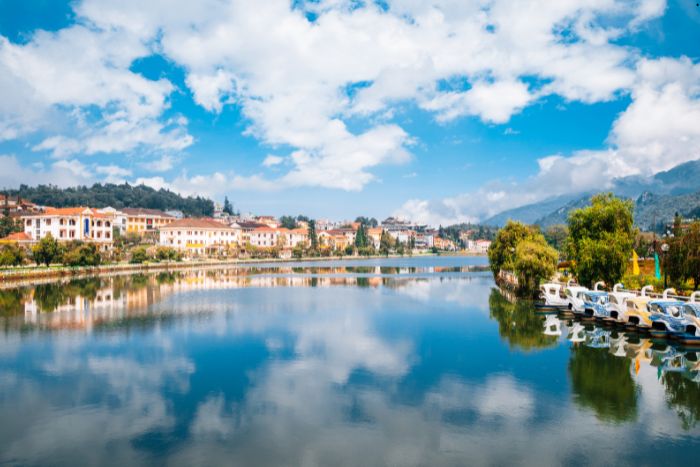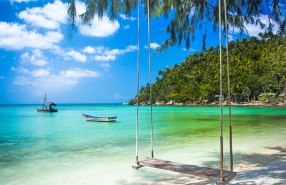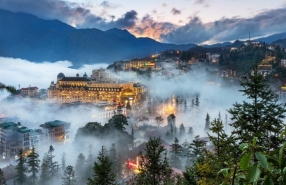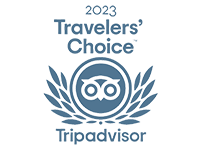Choosing Sapa Or Mu Cang Chai For Your Northern Vietnam Trip?

When traveling in northern Vietnam, Sapa and Mu Cang Chai are two highly sought-after destinations for travelers. With their picturesque natural landscapes and the unique cultural life of ethnic minorities, Sapa and Mu Cang Chai offer unforgettable experiences. However, if you’re unsure between Sapa and Mu Cang Chai, check out the article below to find out which of these destinations would suit you best!
Table of Contents
I. Overview of Sapa and Mu Cang Chai
Sapa and Mu Cang Chai are two famous tourist destinations in northern Vietnam.
Sapa, located in Lao Cai province about 320 km from Hanoi, enjoys a cool climate year-round, making it an ideal place to visit at any time. Moreover, this misty town attracts visitors with its diverse activities, ranging from trekking to the highest mountain in Southeast Asia to taking a train ride through the romantic Muong Hoa Valley.
As for Mu Cang Chai, located in Yen Bai province about 300 km from Hanoi, this destination is less known by tourists compared to Sapa. It is home to some of the most stunning and splendid rice terraces in Vietnam, perfect for capturing stunning photos. Here, you can also explore the daily life of the ethnic groups and their agricultural and economic activities.
II. Why should visit Sapa Vietnam?
1. Discover breathtaking natural landscapes
Sapa's natural landscapes are more diverse than those of Mu Cang Chai. You can visit the Muong Hoa Valley, Mount Fansipan, the roof of Indochina, waterfalls, and caves in Sapa. In some villages, the locals also cultivate using the rice terrace model, although these are not as extensive as those in Mu Cang Chai.

2. Taste the authentic flavors of the northwest
One of the reasons Sapa attracts more and more tourists is the reputation of its delicious local specialties. When visiting Sapa, you will have the opportunity to taste dishes considered symbols of northwest Vietnamese cuisine. Sapa specialties are always fresh and flavorful because the ingredients are grown locally, offering unique tastes.
Additionally, each ethnic group has its typical dishes, so don’t miss out on trying the “thắng cổ” (horse meat dish) of the Hmong, the Tay’s pho chua, and the corn wine of the Dao and Hmong people.
3. Enjoy fun activities in Sapa
Tourism in Sapa has developed significantly in recent years, making the services and activities for visitors diverse and attractive. For example, you can trek through ethnic villages, conquer Fansipan Mountain, or explore the Love Waterfall — ideal activities for hiking enthusiasts. If you prefer a more romantic experience, you can take the cable car to Fansipan Peak or travel by train through the Muong Hoa Valley. To explore culture and spirituality, don’t miss the chance to visit traditional craft villages, the stone church, and the cultural and spiritual complex on the top of Fansipan.
Accommodation in Sapa is also diverse, ranging from 5-star hotels to homestays and hostels, allowing you to choose according to your budget while ensuring a complete tourist experience.

III. Why should visit Mu Cang Chai?
1. Admire the splendid Mu Cang Chai rice terraces
Classified as a special national monument, the Mu Cang Chai rice terraces are a true artistic masterpiece of the Hmong people. Although Mu Cang Chai is beautiful in all seasons, the peak tourist months are September and October. This is the rice harvest period, when the mountains are covered in a golden hue, attracting visitors and photographers eager to capture this sublime moment between nature and the locals.

2. Discover the unique culture of local ethnic groups
Mu Cang Chai is also famous for its traditional festivals and cultural activities, which provide a better understanding of the daily life of the ethnic groups in northern Vietnam, particularly the Hmong. Among the key events is the “Mua Vang” harvest festival in September and October, featuring cultural activities such as folk art performances, bamboo weaving competitions, and ethnic sports contests. Even during the harvest season, the locals seize the opportunity to participate in this grand annual festival, creating a festive and warm atmosphere to welcome visitors.

IV. How to get to Sapa and Mu Cang Chai?
To get to Sapa or Mu Cang Chai, you need to travel by road from Hanoi and other northern cities of Vietnam. The journey takes about 5 to 6 hours, so you can choose to take a night sleeper bus from Hanoi to arrive in Sapa or Mu Cang Chai in the morning.
If you want to visit both destinations, you can start with Sapa, and then continue your journey for more than 130 km to Mu Cang Chai. This route will allow you to experience conquering the winding passes on the slopes of the mountains.

V. Suggested travel itinerary for Sapa and Mu Cang Chai
How many days are enough for Sapa or Mu Cang Chai? It is recommended to dedicate at least 3 days to visit each destination. Here are suggested 3-day itineraries for Sapa and Mu Cang Chai:
- Day 1: Hanoi - Sapa
- Day 2: Sapa - Cat Cat Village - Y Linh Ho Village - Lao Chai Village - Ta Van Village
- Day 3: Ta Van Village - Sapa - Hanoi
- Day 1: Hanoi - Nghia Lo City
- Day 2: Nghia Lo City - Mu Cang Chai
- Day 3: Mu Cang Chai - Hanoi
Depending on the travel experience you are looking for, you can choose between Sapa and Mu Cang Chai. If you want to experience many diverse activities, Sapa will be the ideal destination. On the other hand, if you prefer to visit a less touristy region and immerse yourself in the local culture and natural beauty, you can explore Mu Cang Chai. If you have any questions, feel free to contact Autour Asia, your Vietnam travel company. Our travel advisors will respond to you as quickly as possible.
Yes, you can refer to this itinerary: 12 days in North Vietnam. It’s possible to visit both in a single trip, ideally with 5-7 days to fully experience each destination. Many travelers start in Sapa, enjoying its diverse activities and scenic views, and then continue to Mu Cang Chai to immerse themselves in the quieter, more authentic landscapes of the rice terraces, or vice versa. This approach allows you to appreciate both locations' unique beauty and cultural offerings without feeling rushed.
Choosing between Sapa and Mu Cang Chai depends on your travel interests. Sapa is more popular and developed, offering a range of activities like trekking, visiting ethnic villages, and exploring markets, making it ideal for those seeking diverse experiences.
Mu Cang Chai, however, is quieter and famous for its stunning rice terraces, especially during the harvest season, and provides a more authentic, peaceful experience of rural life and local culture.
Related travel guide
Other similar articles
CUSTOMIZABLE BY LOCAL EXPERTS
Personalized trip at the original price!
REFUND GUARANTEE
We believe in our work and promise to give you money back.
GOOD PRICE / QUALITY
95% satisfied more than expected!
24/7 LOCAL SUPPORT
We are always available online to provide assistance at any time.
Most read articles
Autour Asia is highly recommended on
Embracing the mission of "Satisfied more than expected" and providing authentic experiences, we have received numerous recommendations on reputable travel forums:























